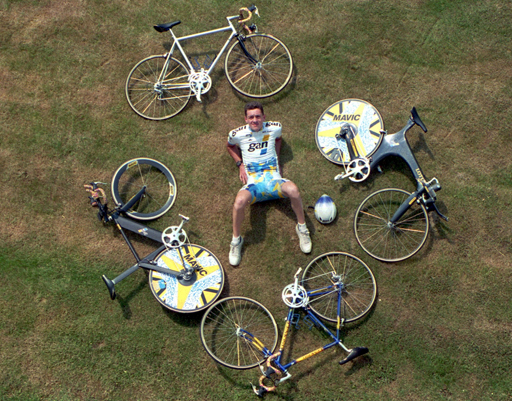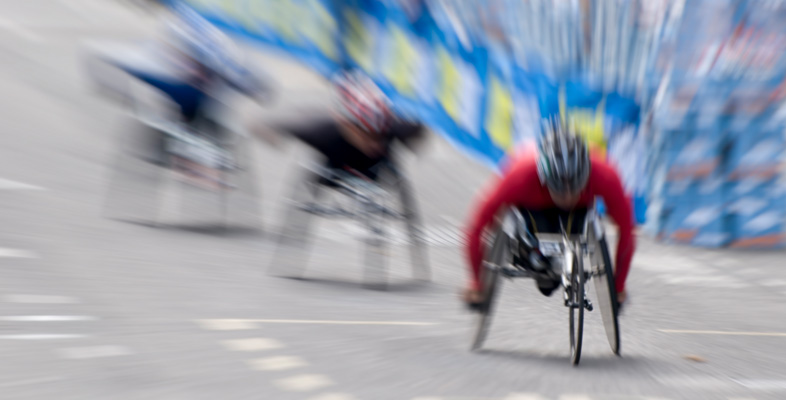2 Aerodynamics and wheeled sports
Cyclists can travel at very high speeds: up to 60 km hr-1 on the track and even faster going downhill in a road race. At such speeds, we have to go beyond the idea of simple air resistance caused by the athlete pushing through the atoms and molecules in the air, and consider how the air flows past the cyclist as well. This leads us to the topic of aerodynamics.
In this section of the course, we introduce aerodynamics and then consider how it affects athletes' performance in cycling.

©
Grateful acknowledgement is made to Getty Images.
Figure 5 Chris Boardman, one of Britain's most successful Olympic cyclists, posing with four of his racing cycles. They are all lightweight in construction but there is a great difference in bicycle design because aerodynamics is very important in some events and less significant in others.
